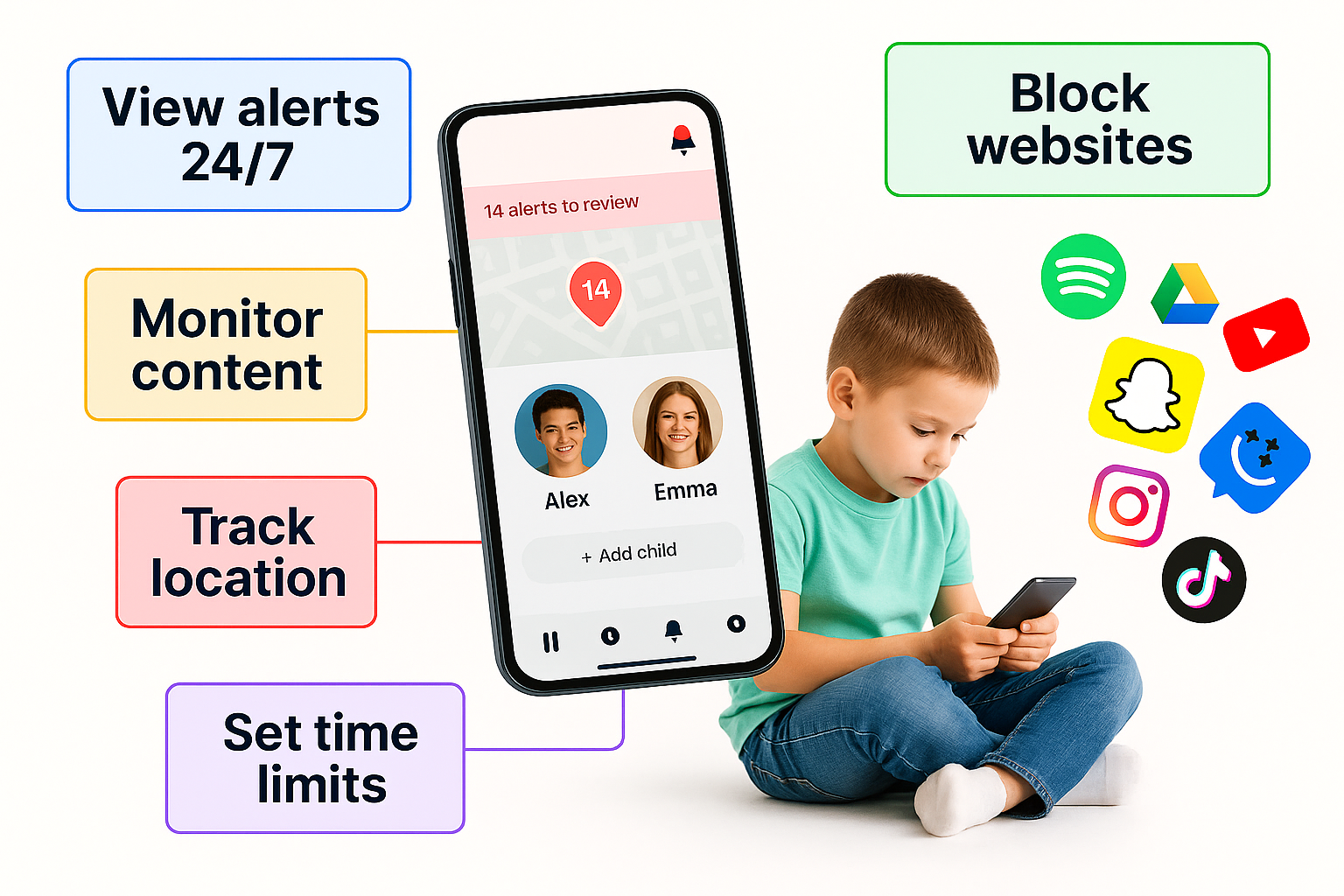Myth vs. Reality: 7 Common Misconceptions Parents Believe About Kid Phones
In the world of digital parenting, many myths persist. Beliefs such as “my child will never install secret apps” or “time limits alone are enough” can lead to misguided policies. In this post, we expose 7 common myths and clarify the real practices that work.
Myth #1: “If you set a screen-time limit, the rest will fall into place.”
Reality: Kids often rush through tasks or sneak time in other periods. Time limits must be paired with conversation, rewards, and monitoring structure.
Myth #2: “Monitoring my child’s phone is spying and will break trust.”
Reality: Monitoring with transparency and explanations builds trust when approached openly. A digital contract helps frame oversight as mutual respect.
Myth #3: “A regular phone with an app is just as safe as a kid-safe phone.”
Reality: A standard phone gives more freedom—and more paths to bypass control. Kid-safe phones often lock down core systems to prevent hacks.
Myth #4: “Kids always prefer unrestricted devices.”
Reality: Many children feel relief when controls are clear and boundaries are fair. Too much freedom can feel stressful or overwhelming.
Myth #5: “Once set up, your job is done.”
Reality: Tech evolves, apps change, and behavior shifts. Digital parenting demands ongoing maintenance, reviews, and rule adjustments.
Myth #6: “Phone misbehavior is always the child’s fault.”
Reality: Often, excessive design, social pressures, or peer influence play a role. Don’t default to blame—use empathy to explore root causes.
Myth #7: “If I ban smartphones altogether, I’m protecting them.”
Reality: Total bans may backfire: kids might get hidden devices, lie, or feel excluded socially. Guided use with rules usually works better.
How to Replace Myths with Smart Practices
- Always explain your decisions and listen
- Combine limits + monitoring + trust
- Choose devices designed to resist circumvention
- Revisit your rules monthly
- Encourage digital literacy—teach kids why boundaries exist
Dispelling myths helps you adopt realistic, balanced strategies that actually work. By pairing understanding with clear structure, you can raise tech-smart, responsible kids rather than enforce one-sided control.

